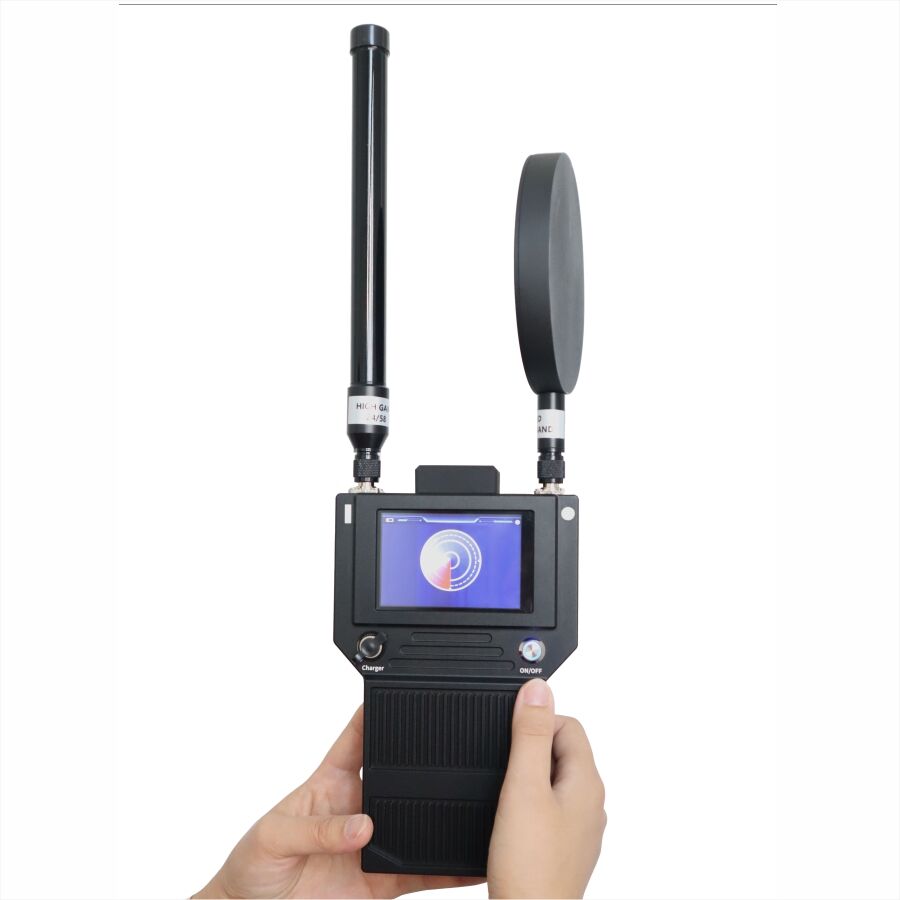Understanding Modern Communication Control in Tactical Operations
In today's increasingly connected world, controlling the electromagnetic spectrum has become crucial for tactical operations. A jammer represents one of the most vital tools in this domain, serving as a cornerstone for maintaining communication security and tactical advantage in various scenarios. As wireless technologies continue to evolve, the significance of having effective jamming capabilities has grown exponentially.
Military forces, security agencies, and specialized units worldwide recognize that communication control can mean the difference between success and failure in critical operations. The ability to selectively interrupt or block specific frequencies while maintaining your own communications has become an indispensable tactical advantage.
Technical Foundations of Tactical Jamming Systems
Core Components and Functionality
Modern jamming systems comprise sophisticated hardware and software elements working in perfect synchronization. The heart of a jammer consists of powerful signal generators, advanced frequency modulators, and precise directional antennas. These components work together to create effective interference patterns that can disrupt targeted communication channels while leaving authorized frequencies untouched.
The latest generation of jammers incorporates artificial intelligence and machine learning algorithms to adapt to changing frequency patterns and emerging threats. This technological evolution ensures that jamming capabilities remain effective against increasingly sophisticated communication systems.
Range and Frequency Coverage
Professional-grade jammers offer extensive frequency coverage, typically spanning from VHF to UHF bands and beyond. The effective range varies based on power output and environmental conditions, but modern systems can create secure zones ranging from several meters to multiple kilometers. Advanced directional capabilities allow for precise control over the affected area, minimizing collateral interference.
The ability to selectively target specific frequency bands while leaving others operational has made jamming technology increasingly valuable in complex operational environments. This selective jamming capability ensures critical communication channels remain functional while potential threats are effectively neutralized.

Strategic Applications in Modern Operations
Perimeter Security Enhancement
Jammers play a vital role in establishing secure perimeters around sensitive facilities and operations. By creating controlled communication dead zones, security teams can prevent unauthorized data transmission and potential security breaches. This capability has become particularly important in protecting against modern threats such as unauthorized drones and remote-controlled devices.
The strategic deployment of jamming systems around critical infrastructure helps maintain operational security by preventing unauthorized communication and surveillance attempts. This proactive approach to security has proven especially valuable in protecting high-value assets and sensitive operations.
Tactical Advantage in Field Operations
Field operations benefit significantly from the tactical advantages provided by modern jammers. Teams can effectively control the electromagnetic spectrum in their area of operations, preventing adversaries from coordinating their activities or using remote-triggered devices. This capability has proven invaluable in numerous scenarios, from VIP protection to counter-terrorism operations.
The ability to rapidly deploy and activate jamming systems provides operators with a significant tactical advantage, allowing them to maintain initiative and control over the operational environment. This technological edge often proves decisive in critical situations where timing and communication control are essential.
Integration with Existing Security Infrastructure
Seamless System Implementation
Modern jammers are designed to integrate smoothly with existing security infrastructure, complementing other protective measures and enhancing overall security posture. Advanced control interfaces allow security personnel to manage jamming systems alongside other security components through unified command centers.
The integration process typically involves careful planning to ensure jamming operations don't interfere with legitimate communication needs while maintaining effective protection against potential threats. This balance is crucial for maintaining operational efficiency while ensuring comprehensive security coverage.
Training and Operational Requirements
Successful implementation of jamming systems requires comprehensive training programs for security personnel. Operators must understand not only the technical aspects of the equipment but also the legal and operational considerations surrounding its use. Regular training exercises ensure teams maintain proficiency and can respond effectively to various scenarios.
Ongoing maintenance and system updates are essential to ensure jamming capabilities remain effective against emerging threats. This includes regular software updates, hardware maintenance, and periodic testing to verify system performance and reliability.
Future Developments and Technological Trends
Advanced Signal Processing Capabilities
The next generation of jammers will feature even more sophisticated signal processing capabilities, leveraging quantum computing and advanced AI algorithms. These developments will enable more precise and adaptive jamming techniques, capable of countering increasingly complex communication systems and emerging threats.
Research into new frequency manipulation technologies promises to deliver more efficient and effective jamming solutions, with reduced power requirements and enhanced operational flexibility. These advances will further expand the capabilities and applications of tactical communication control systems.
Enhanced Integration and Automation
Future jamming systems will feature enhanced automation and integration capabilities, allowing for more seamless operation within comprehensive security frameworks. Improved AI-driven threat detection and response systems will enable faster and more accurate jamming deployment, reducing the need for manual intervention.
The development of smart networking capabilities will allow multiple jamming systems to work together more effectively, providing broader coverage and more sophisticated response options to complex threats.
Frequently Asked Questions
What makes modern jammers different from older systems?
Modern jammers incorporate advanced digital signal processing, AI-driven adaptation, and precise frequency control capabilities that weren't available in older systems. They offer greater selectivity, improved efficiency, and better integration with other security systems while consuming less power and providing more reliable performance.
How do jammers affect authorized communication systems?
Professional-grade jammers are designed with selective frequency blocking capabilities, allowing authorized communications to continue while targeting specific threat frequencies. This selective jamming ability ensures minimal impact on legitimate operations while maintaining effective security measures.
What maintenance requirements do jamming systems have?
Jamming systems require regular maintenance including software updates, hardware inspections, and performance testing. This typically involves quarterly technical assessments, annual comprehensive maintenance, and periodic calibration to ensure optimal performance and reliability in tactical operations.

